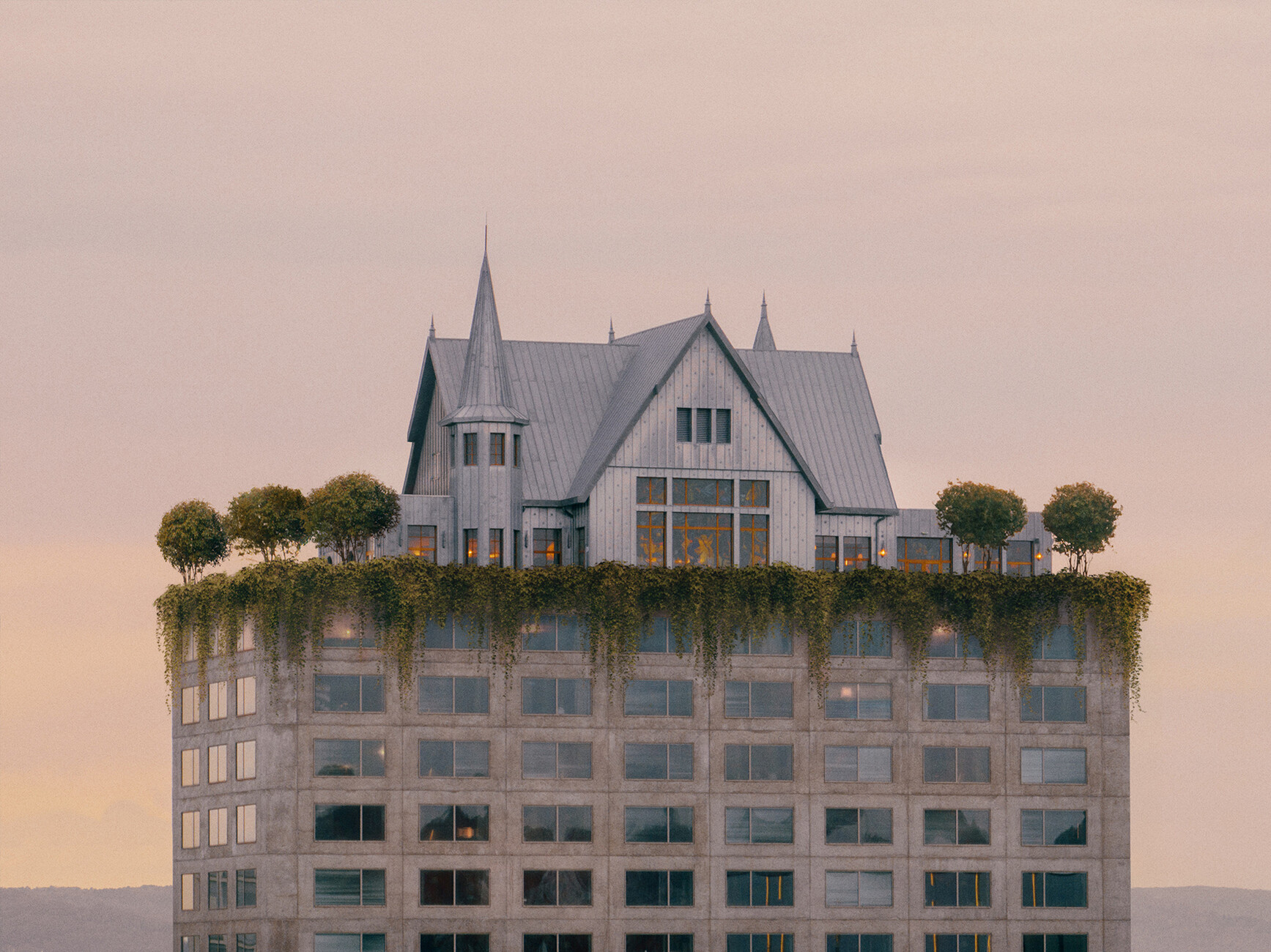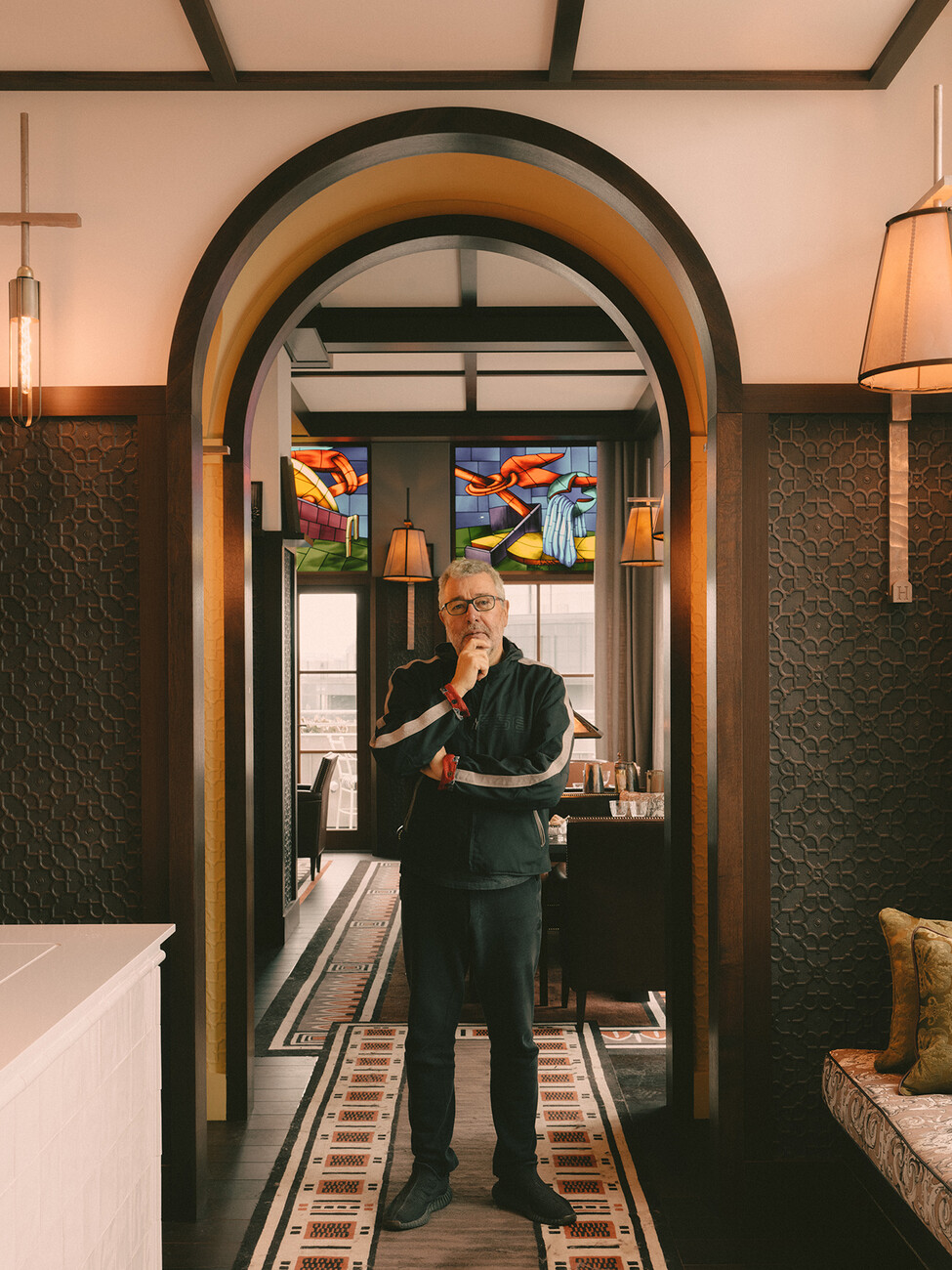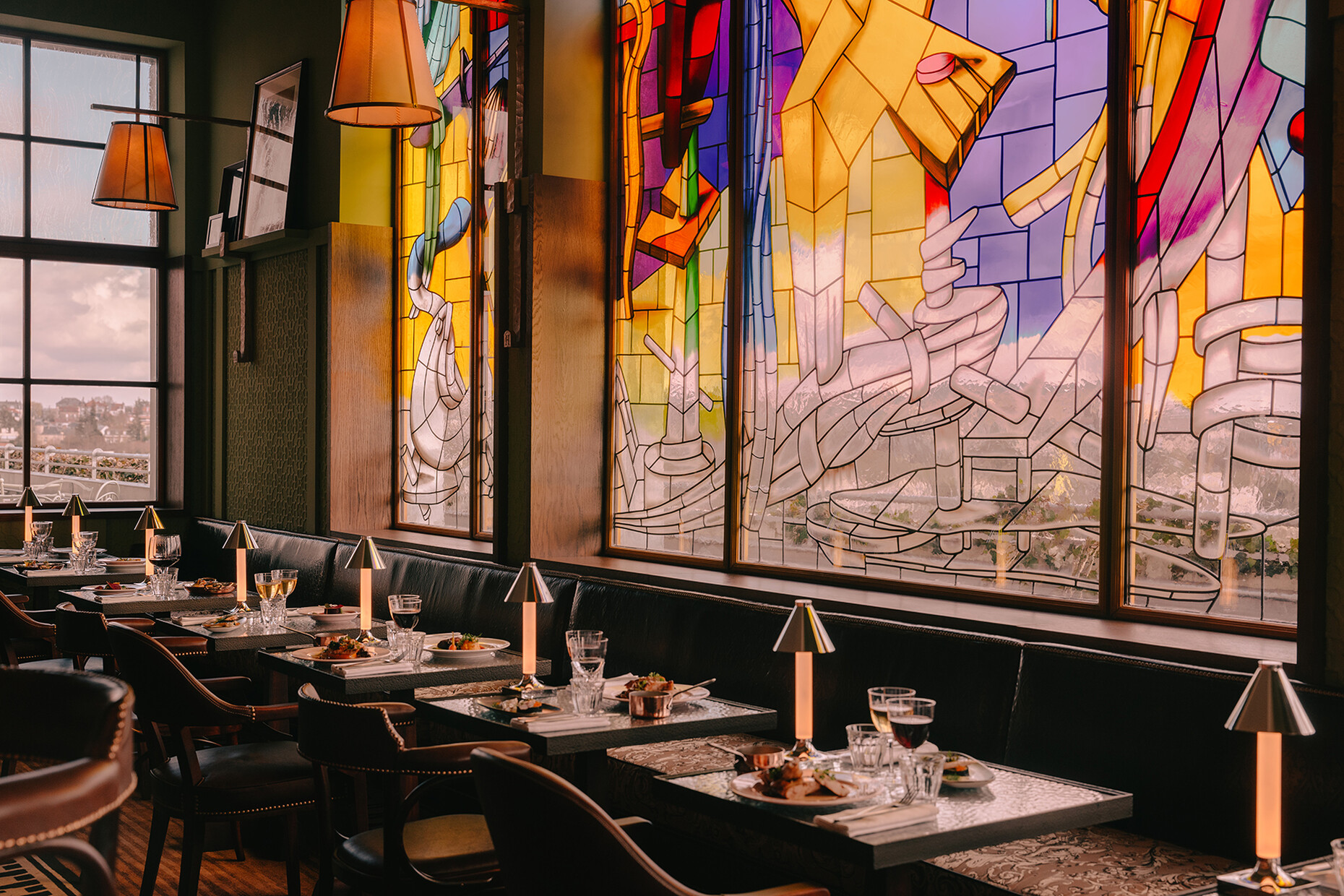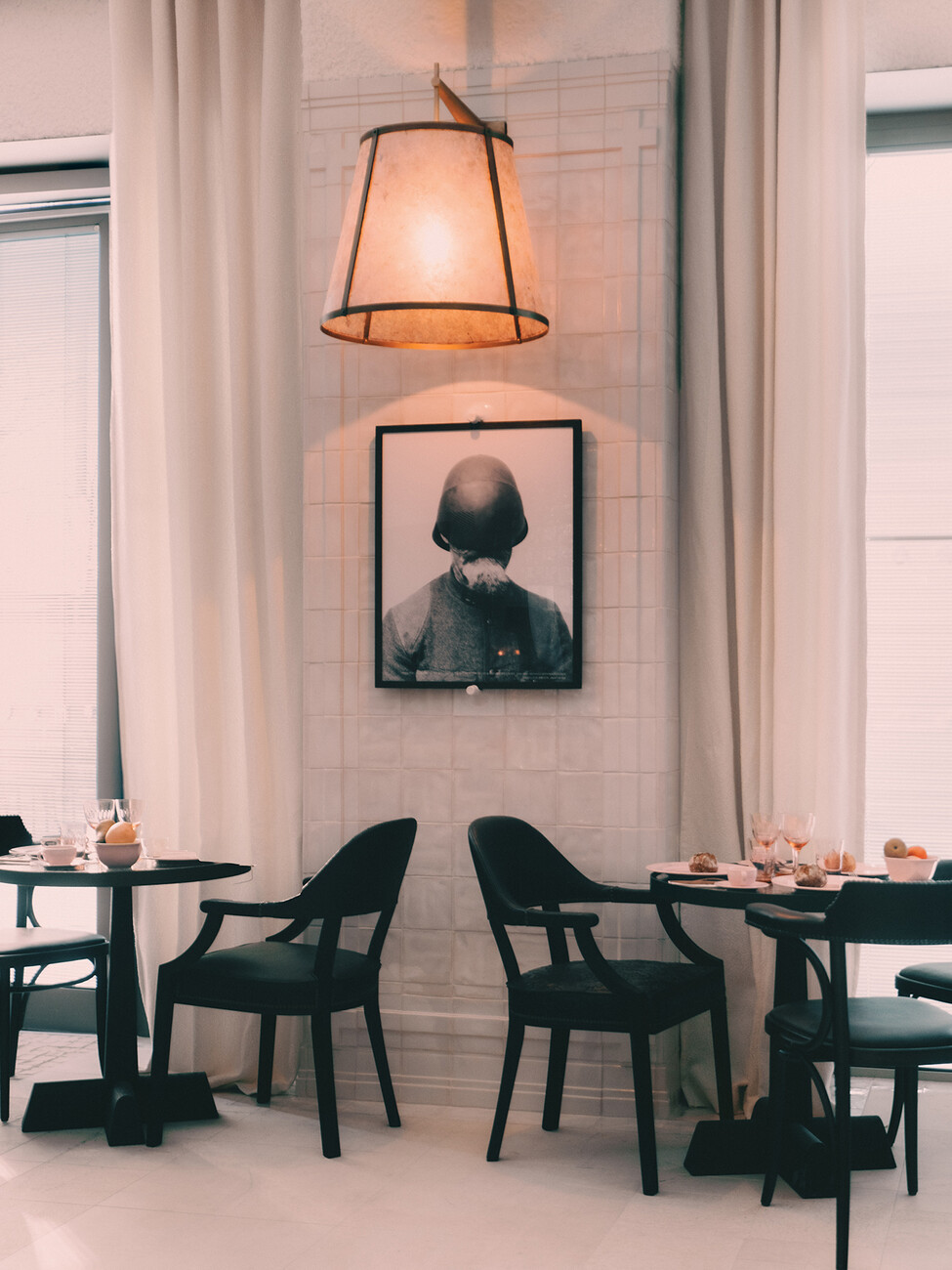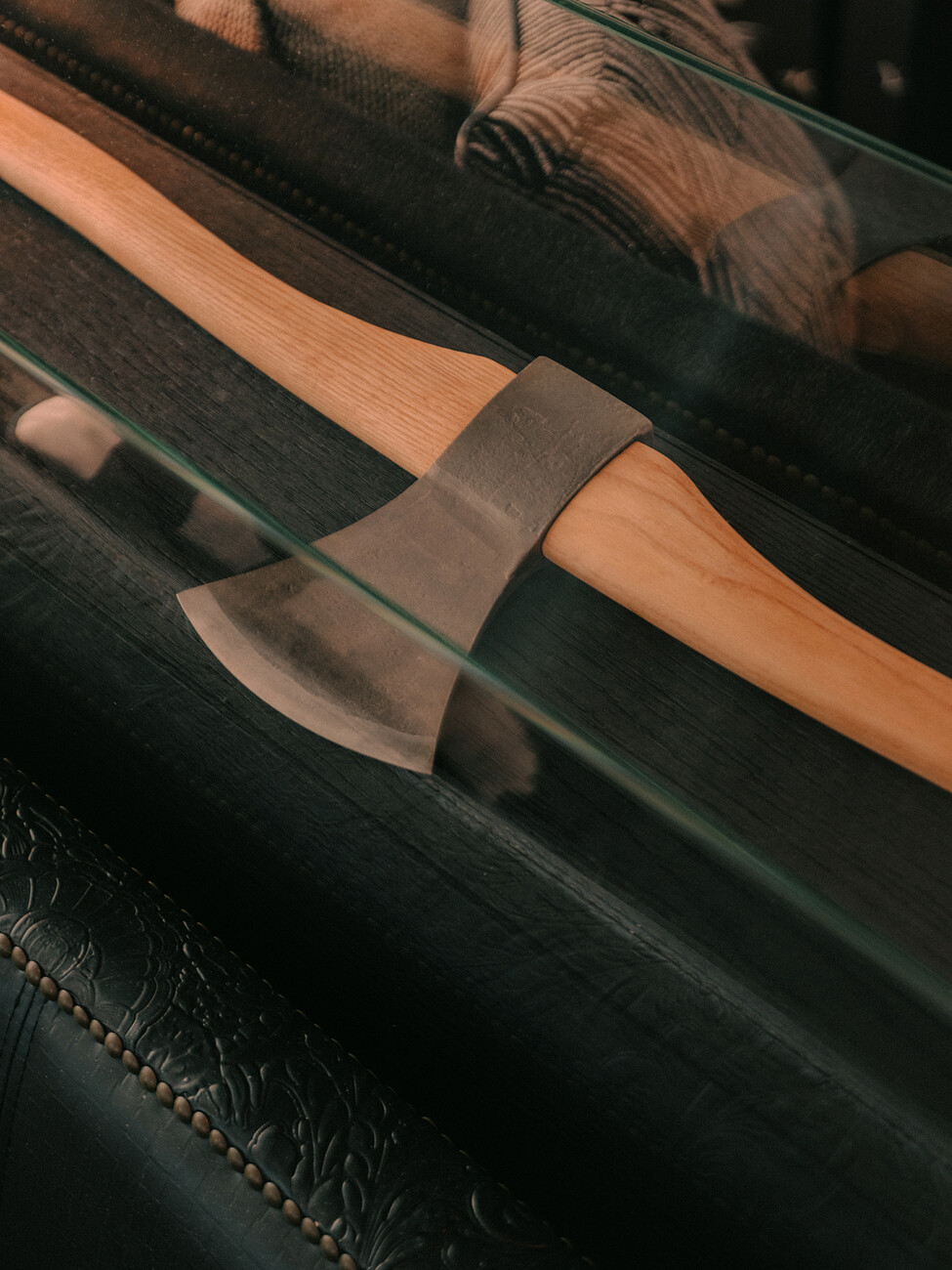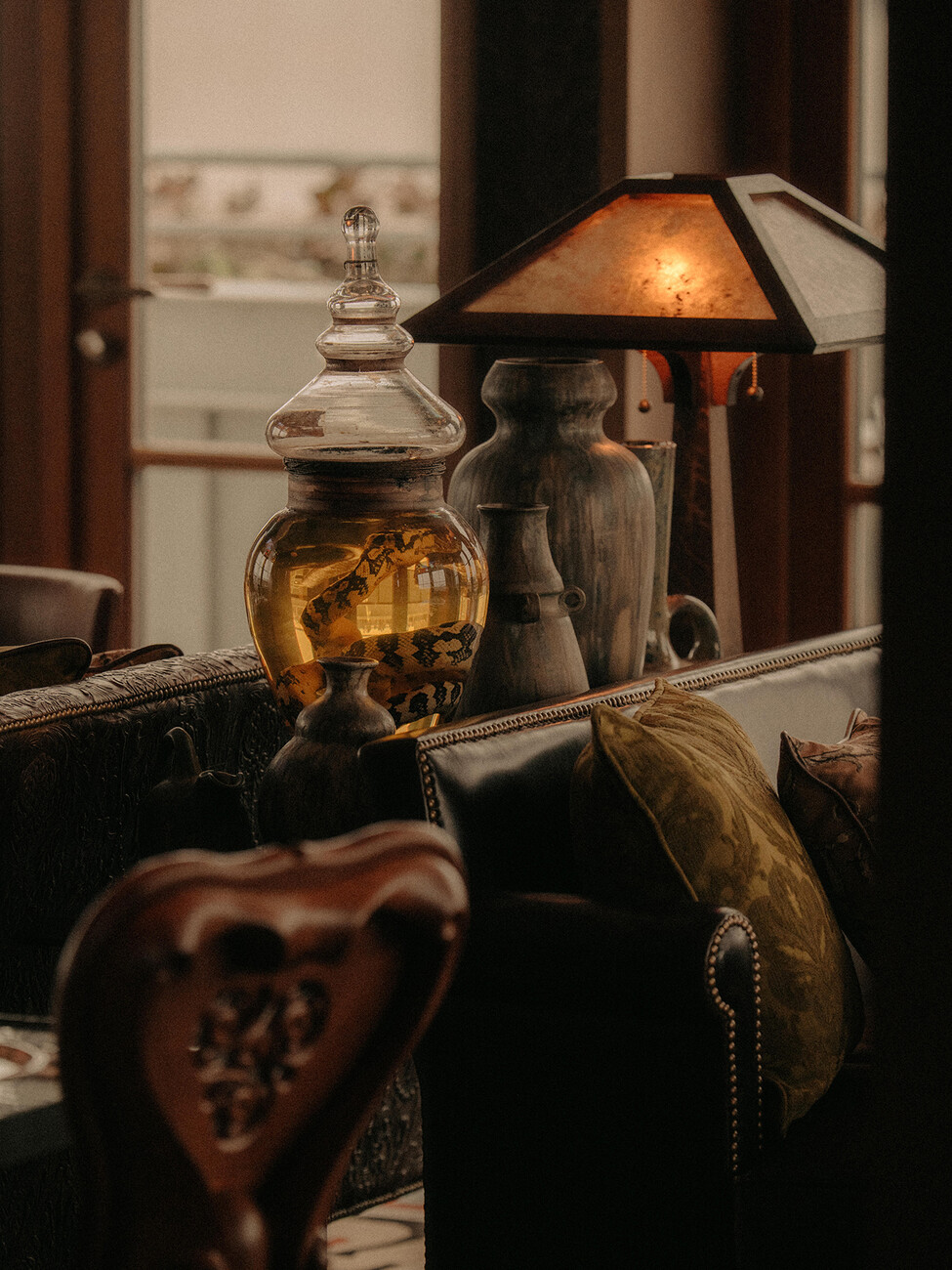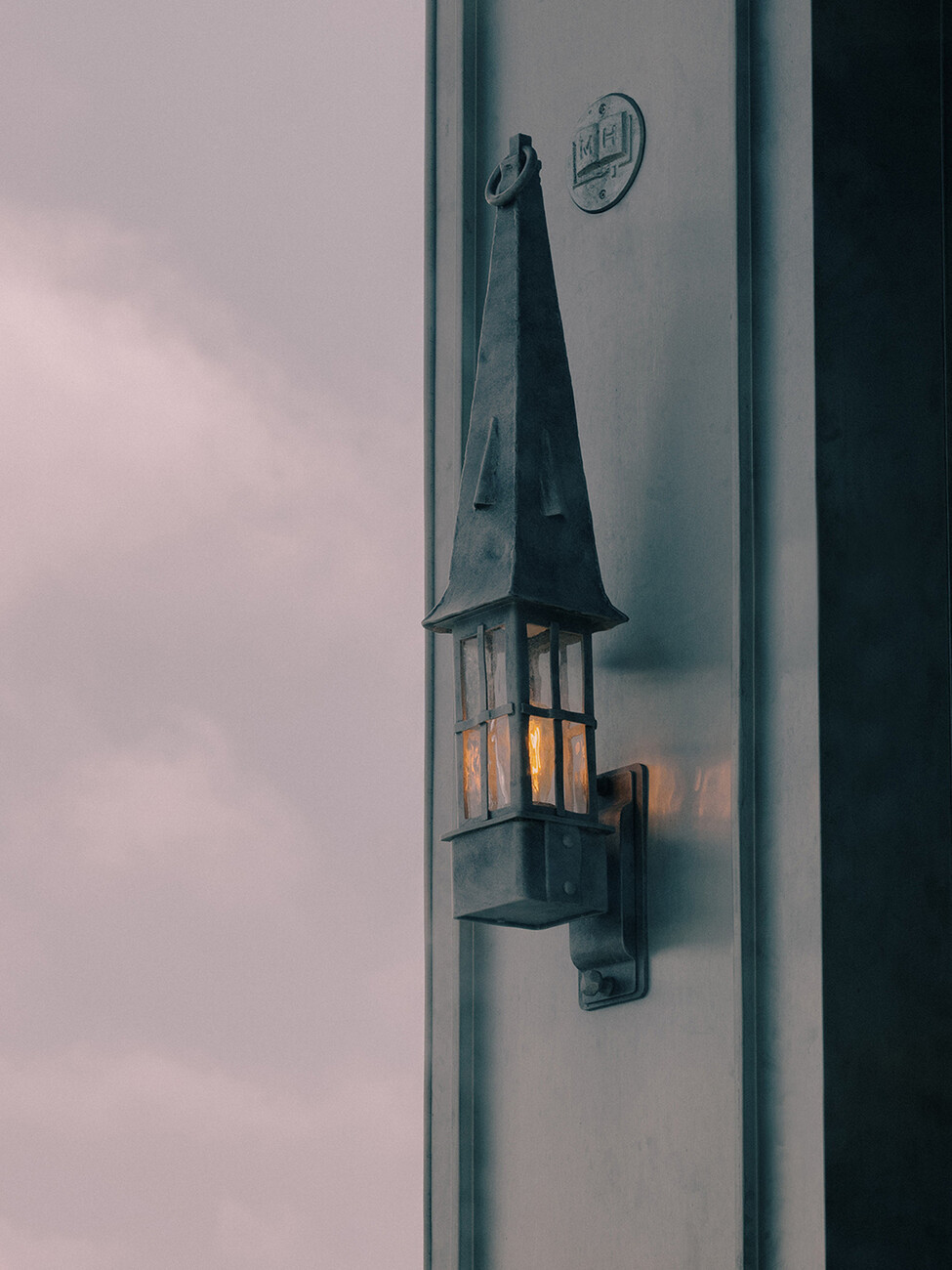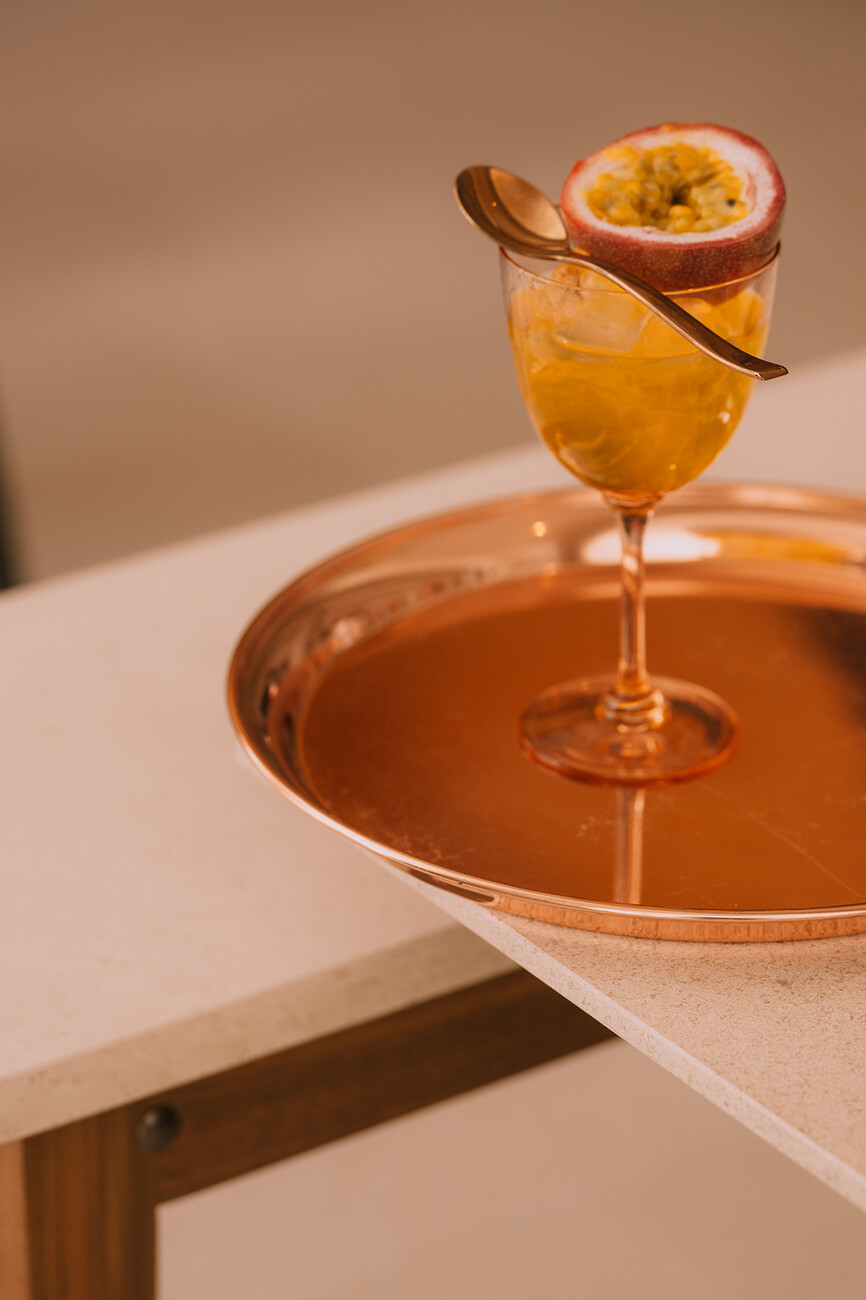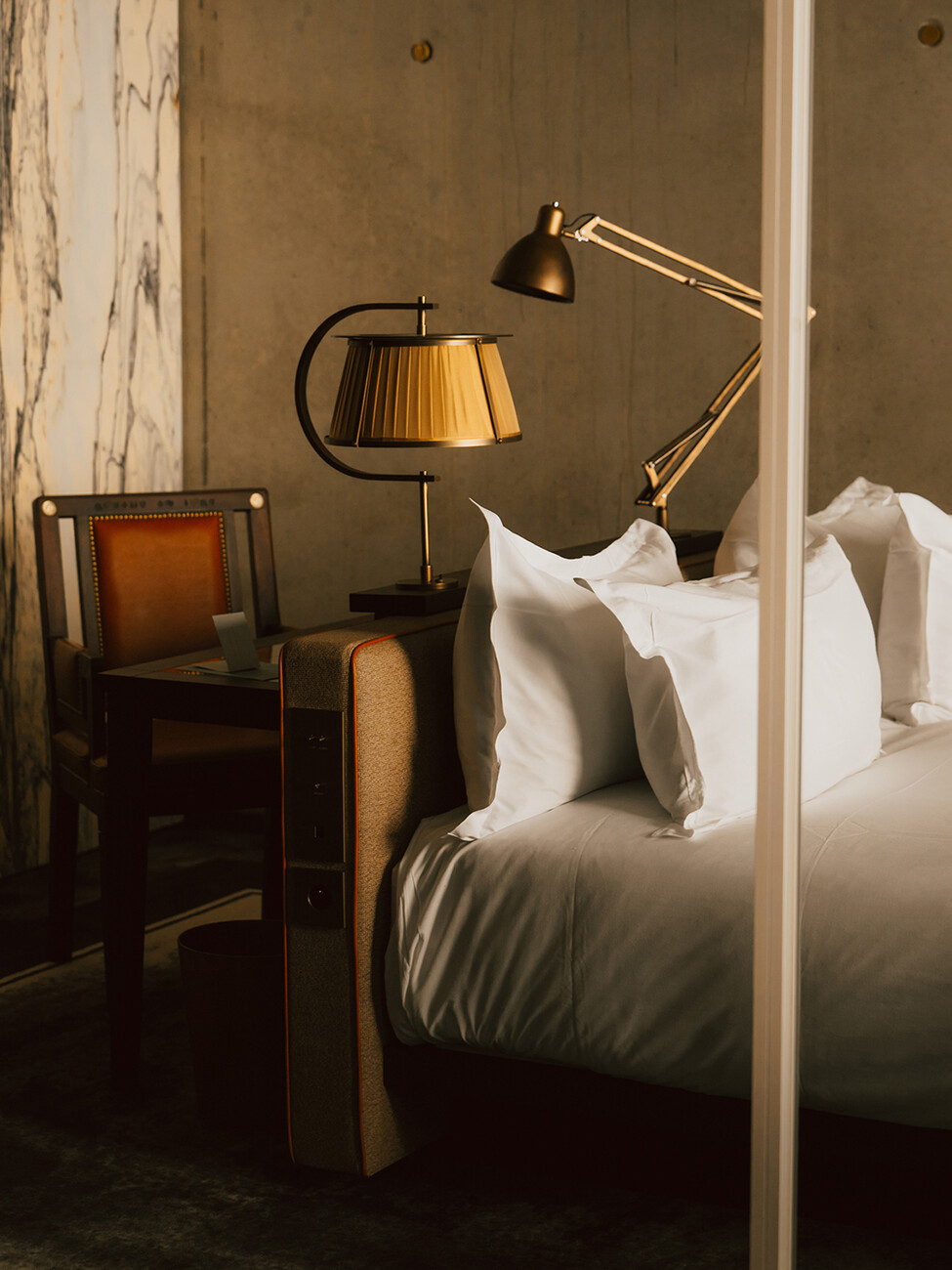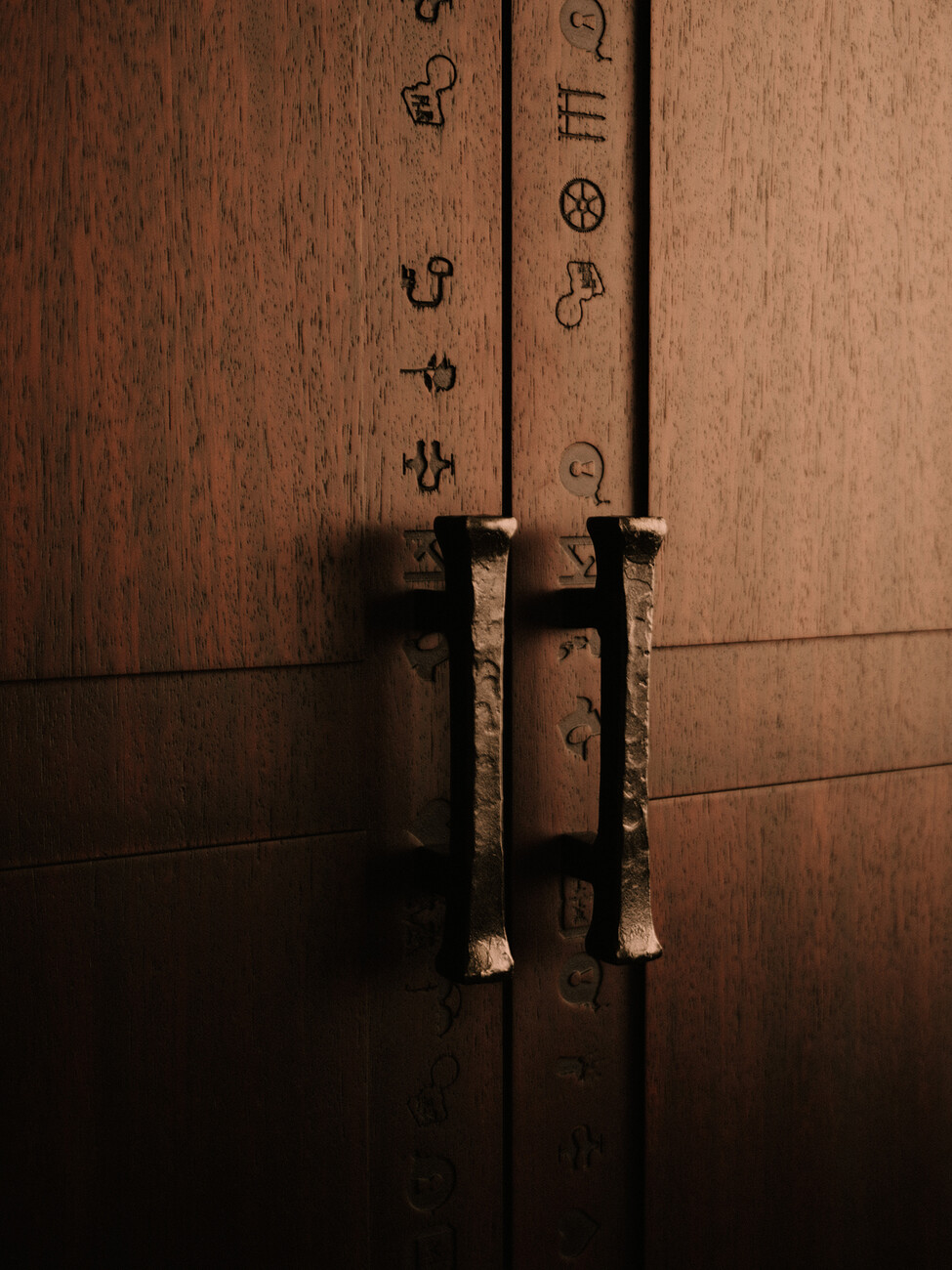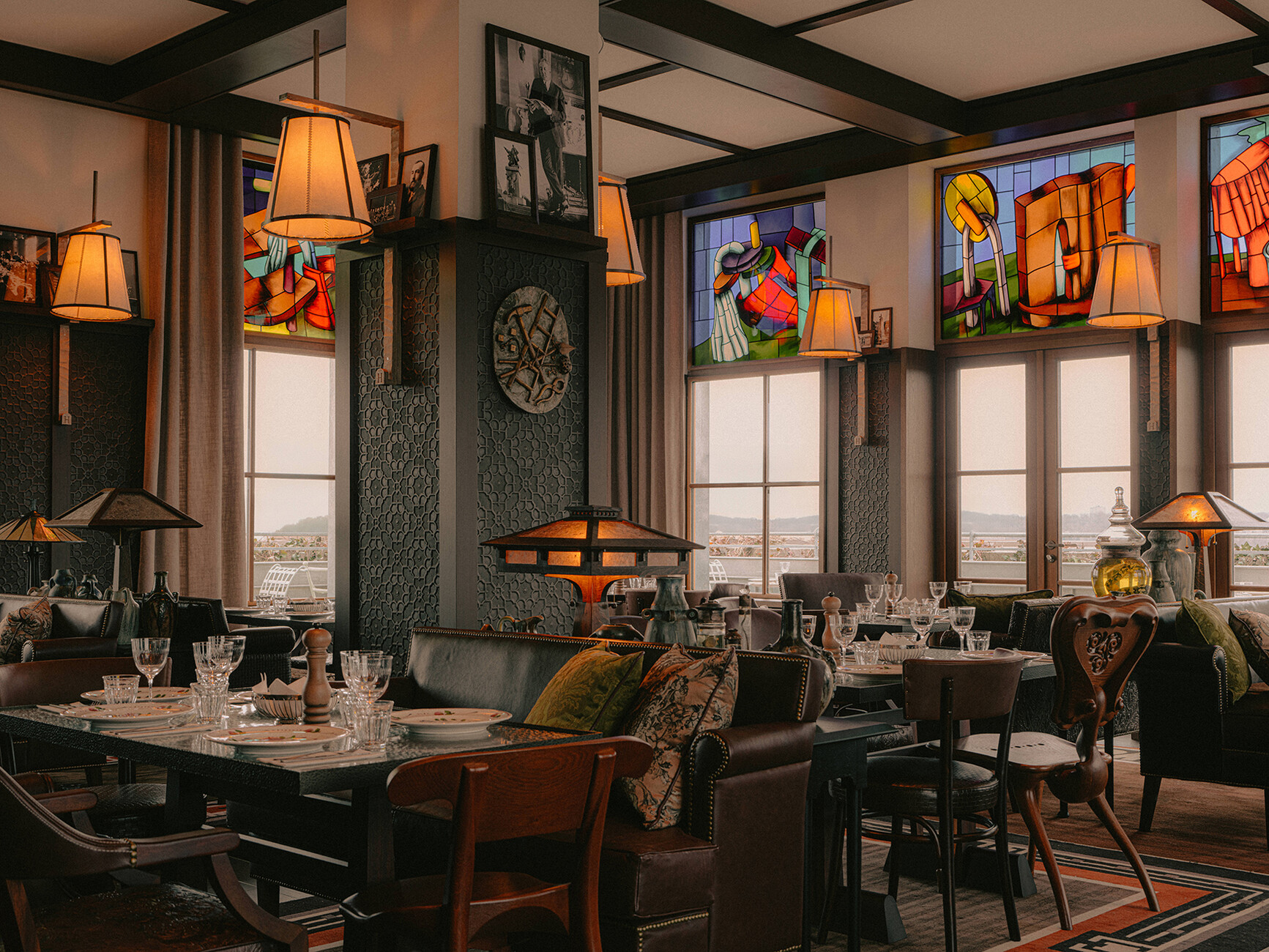Dream journey into the past
The route to Philippe Starck's spectacular new hotel building is a bit of a detour. It takes you through history and to a place that is currently being reinvented: the ‘Quartier de l'Amphithéâtre’ in Metz resembles many fundamentally redesigned urban districts. It is clearly structured, appears fresh and well thought-out – and yet, for the most part, decidedly mundane. The 38-hectare site has been divided into building plots in a regular grid pattern. Its block structure is now gradually being filled with new buildings.
The district is named after the former Roman amphitheatre, which was larger than the preserved theatres in Nîmes and Arles. After the Romans, Saint Clement arrived around 280 and, according to legend, freed the city from the evil dragon Graouli and deadly snakes that had taken up residence in the ruins of the theatre. In gratitude, the citizens of Metz renounced their pagan beliefs and became Christians. In 1737, Louis de Cormontaigne had a fortification built here using the remains of the amphitheatre, based on plans by Vauban. This was replaced around 1905 by the freight station, which in turn was abandoned in the 1980s. A piece of the boundary wall made of sandstone and wrought iron still remains somewhere.
At the turn of the millennium, the city of Metz acquired the entire site of the former Metz-Marchandises railway station from the SNCF railway company and cleared it. In 2010, the Centre Pompidou Metz, designed by Shigeru Ban, opened in the north of the site as a cultural attraction. Directly opposite, the ‘Muse’ shopping mall stretches southwards over several blocks. Many functions are located nearby: residential and administrative buildings, sports arenas, a park, shopping facilities, entertainment and conference venues. What is missing are traces of historical building culture.
The mall is adjoined by an unadorned cinema complex. Opposite stands a multi-storey high-rise slab. It deliberately ignores the grid and divides the rectangular plot diagonally, creating a small tree-lined garden area. This is Philippe Starck's new hotel building, ‘Maison Heler,’ operated by the Hilton Group under the Curio Collection brand. There are 104 rooms and suites on eight residential floors, plus conference rooms and two restaurants, each with its own bar.
The prefabricated building with its textured surface appears unadorned at first glance, until you look up at the sky: on the ninth floor, an ornate building rises above the austere concrete structure. With turrets and bay windows, uniformly clad in zinc sheet metal, it seems to have come here from another time. Trees grow next to the building, and plants climb sporadically over the edge of the roof terrace. If there is such a thing as an attraction in the well-kept boredom of the new district, it is the ancient structure on the roof.
But what is a historicist building like this doing on top of a concrete box? For Starck, the built symbol is part of the comprehensive narrative he has devised for the entire project, to which all the details in the hotel refer. It is the story of the inventor and maverick Manfred Heler and his world. Starck's surreal fairy tale is available to hotel guests in the form of a small illustrated booklet. A map with ‘Manfred's alphabet’ helps to decipher a system of symbols that can be found throughout the hotel. Much of it is imaginary, some of it seems surrealistic or poetic, as Starck emphasises, while other elements manifest themselves in images, rooms, materials and objects with a private feel that are not usually found in a hotel.
Manfred is said to live ‘alone in a magnificent house’ – a ‘landmark of Lorraine architecture’ – and to be ‘a man with a contemplative and meticulous disposition, devoted to new inventions, constantly surprised and trying to win over his imaginary lover Rose.’ The restaurant ‘La Cuisine de Rose’ on the ground floor is dedicated to her and houses not only its own bar but also the hotel reception. ‘Everything that comes from Rose is pink,’ says Starck, explaining his not very surprising colour concept. He chose a specific model for the house on the roof. It is also located in Metz, just a 20-minute walk from the hotel. The route leads through the new district towards the railway station, under the railway tracks and on to Avenue Foch 22. This is where a German architect named Hermann-Eduard Heppe built the Villa Salomon in 1903.
Instead of a zinc shell, it has decorative elements made of sandstone and half-timbering. It is part of the urban expansion that took place during the first German annexation of Alsace-Lorraine after the Franco-Prussian War of 1870/71. Like the Quartier de l'Amphithéâtre today, this new town, now called the ‘Quartier impérial’ (Imperial Quarter), followed the urban planning principles relevant at the time. Due to its aesthetic models from the Rhine and its soulful Germanic architectural doctrine, it was once controversial, as art historian Christiane Pignon-Feller has researched. Germany did not only bring military personnel and Protestant new citizens to Metz in order to Germanise the city.
The German ‘cannon railway’ served to quickly transport materials and soldiers and led all the way to Metz. Today, the station is appreciated for its spatial quality and detailed imagery, despite its manifestation as Wilhelmine power architecture. The historian describes the building materials that the Germans brought with them as a ‘form of interference’: ‘Bunt sandstone and granite, which were quarried in Lorraine or Alsace, but were nevertheless considered German architectural aberrations.’
In the modern European metropolis of Metz, this era seems as distant as the freight railway tracks or the ruins of the amphitheatre. And yet it has had a formative influence on the cityscape and its self-image. Starck sets his fictional characters and stories against the backdrop of this real history. Starck references this period in images and text, but also in the hotel's interior design, which features an infinite number of details. The imaginary character Manfred Heler also allows him to step back from his creation and bring it and its fantasy world to life. Does a newly planned city district have to be so unattractive? Starck does not take his cue from modernity, but from the period around 1900. He offers a temporary escape to a long-lost world of well-being – with all its ambivalences. Dark wood and leather colours dominate the rooms and the rooftop restaurant ‘La Maison de Manfred’. The stained glass windows, which are instrumental in creating the atmosphere of the room, were designed by Ara Starck, who has already provided decisive artistic ingredients for many of her father's projects.
In the rooms, brown tones contrast with rough-hewn concrete, and the marble used in the bathrooms has a hand-cut edge. The handles on the furniture are made of wrought iron, and the light fixtures are from a set design that could have been created anywhere between 1900 and 1930. It is a design game in which Starck can step back behind his alter ego and yet be more dominant than ever before.
The fact that Manfred's likeable, eccentric world of the ‘axe with two handles’ and ‘centrifuges for lovesickness’ was followed by the catastrophe of the First World War is suggested by black-and-white historical photographs from French archives showing inventions from the interwar period, including curious household appliances, variations on gas masks and strange pseudo-military devices.
Starck evokes the bourgeois lifestyle of a bygone era as a model, not only in the family restaurant ‘Maison de Manfred’ in the little house on the roof, whose 100 seats are complemented by another 100 on the roof terrace. From here, you can see over the rooftops of the city, the Centre Pompidou, the towers of the cathedral and the train station. The fact that the view is not breathtaking is also due to the immediate surroundings.
Many guests express their enthusiasm online, while some are disappointed that the choice of food at the ‘Maison de Manfred’ is limited and that the coveted location is subject to fixed two-hour time slots. His hotels (as well as his restaurants and clubs) are always furnished with his designs, but are characterised by a precise understanding of dramaturgy, elegance and a feel for spatial structure. Starck uses expressive objects by well-known colleagues as a counterpoint. For example, he placed Jurgen Bey's Tree Trunk Bench in one hotel lobby and Marc Newson's Lockheed Lounge chair in another as a point of orientation. In the Maison de Manfred, the restaurant housed in the cottage at the top of the hotel, Antoni Gaudí's Calvet chair blends unspectacularly with Starck's new-old designs.#
When the designer talks about surrealism and poetry in relation to his concept hotel, it brings to mind a critical appraisal by Niklas Maack. Writing about Starck's lighting and furniture, he said: ‘Surrealism is dragged into the showrooms, where the design objects stand around like party guests telling the same joke over and over again.’ The architecture of the ‘Maison Heler’ also speaks incessantly, telling its story in an endless loop.
Starck recently expressed his frustration at how design is ‘drifting towards luxury’. In his view, most of his products and projects are democratic because they are accessible and affordable. He claims that he only very rarely designs luxury items. He has been familiar with hotels since Ian Schrager had him visit and analyse several of them every day for two weeks in 1994. Starck then went on to design stylish boutique hotels in New York (Royalton, Hudson) and Miami (Delano). The latter was named one of the 25 most influential spaces in design history by the New York Times. He has now created spaces for hotels and restaurants on almost every continent, combining a love of detail with total design.
‘For me, a hotel is a machine that generates experiences,’ Starck confided to Ingeborg Harms of Die Zeit in an interview in 2009. Around the same time, he began thinking about a hotel project in Metz. Ten years later, it is largely complete, with only the spa area scheduled for completion in 2026. Visiting the lobby of the Delano Hotel in Miami is ‘like entering a classical temple,’ claimed Susan Slezin in the New York Times. The space has not only influenced other hotel lobbies, but also ‘the way people view their rooms, their entrances and, above all, their rooms.’ Will Manfred Heler's world develop a similar influence far beyond Metz?
Contact
Maison Heler Metz, Curio Collection by Hilton
31 Rue Jacques Chirac
57000 Metz, Frankreich
Phone: +33 3 56 63 16 31
